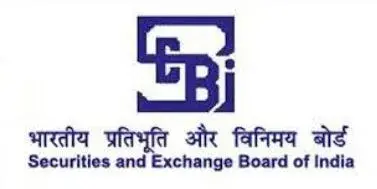India: Finance Ministry suggests middle ground on RBI’s order to store payment’s data on Indian soil

Source: www.rbi.org.in
On April 06, 2018, the Reserve Bank of India had notified that the data relating to payments such as transactions, end-to-end details / information collected / carried / processed as part of the message / payment instruction (cashless) has to be stored within the Country. This came as heavy winds to many multinational payment gateways such as Visa, MasterCard etc. which store their data on servers located in various IT havens such as Singapore, etc. With an intent of have unfettered access to the data reserves of the payment system providers, the order by RBI, stated that payment system operators are required to ensure that all data related to payment systems operated by them is storedonly within India. The deadline for this humongous task was to be six months from April.
As per the RBI Circular, all payment system providers were inter alia required to report their compliance to the circular before the said deadline. It further required that an audit be conducted by CERT-IN empaneled auditors certifying completion of the activity. The last date for submitting the audit report is not later than 31 December 2018.
Amidst this major compliance to be undertaken by the various payment providers, banking services providers, etc. the Finance ministry has intervened suggesting that the digitalized payment industry be should allowed to retain a copy of the data outside India wherever it is being currently stored and should be allowed for mirroring the same on Indian servers. We look forward to the how the Indian economy and the banking regulator reacts to this suggestion. Visit this space for more updates in the matter.
India: Service tax not due after presentation of cheque for its payment

Source: www.cestatnew.gov.in
he Customs, Excise and Service Tax Appellate Tribunal (hereinafter referred to as “the Tribunal”) at Delhi, in a recent order held that in case of payment of service tax, where the assessee pays the amount through cheque, the date of presentation of such cheque is the date of payment of service tax.
This view of the Tribunal in the instant case of D. B. Corp. Ltd. v. Commissioner of Central Excise Tax, Bhopal, (Excise Appeal No. 51781 of 2018 -SM)has reiterated the view of the said Tribunal in the case of Travel Inn India Pvt. Ltd. vs. CST, Delhi [2016 (41) STR 236 (Tri- Del)].
In the case of D. B. Corp there were two major issues which had reached the Tribunal after an appeal for the same had been dismissed by the Learned Commissioner (Appeals).
The first issue was the discrepancy in the amount mentioned in ST -3 Return filed by the Appellant. The Appellant submitted their service tax returns (as required under Section 70 of the Finance Act, 1994 and Rule 7 of the Service Tax Rules, 1994 in Form ST -3). However, the assessing authority observed that there was some discrepancy with regard to the amount mentioned in ST-3. Consequently, a show cause notice was issued to the Appellant to demand service tax on the differential value of the amount shown in the ST-3 return. The Learned Counsel for the Appellant submitted that the discrepancy was due to a clerical error. It is observed later in the Tribunal’s order, that the Appellant had duly submitted supporting documents 26 days before the order by the Learned Commissioner was delivered. The Learned Commissioner is ordered to revisit the matter and consider the documentation submitted for its review.
The second issue for consideration in the instant case was the one wherein the view of the Tribunal in the Travel Inn case was reiterated. Since, there was an alleged ‘delay’ in payment of service tax, demand of interest was confirmed for the period between the date on which the cheque was presented for payment of service tax and the date on which it was credited in the account of Government treasury.
The Tribunal observed that according to Rule 6 (2A) of the Service Tax Rules, 1994 ‘if the assessee deposits the service tax by cheque, the date of presentation of cheque to the bank designated by the Central Board of Excise and Customs for this purpose shall be deemed to be the date on which service tax has been paid subject to realization of that cheque.’ The Learned Counsel for the Appellant also relied upon the Tribunal’s view in in the case of Travel Inn India Pvt. Ltd. vs. CST, Delhi [2016 (41) STR 236 (Tri- Del)].Therefore, it was held that the demand of interest is not sustainable on the Appellant.
The case was sent back to the Learned Commissioner (Appeals) for considering the documents filed by the Appellant within 30 days from the Order of the Tribunal and for passing an appropriate the order in accordance with the law.
India: Service tax not due after presentation of cheque for its payment

Source:
www.sebi.gov.in
Introduction:
The Securities and Exchange Board of India (hereinafter referred as ‘SEBI’) vide circular[1] dated May 02, 2018, has specified certain additional risk management measures that are required to be complied with and implemented by the stock exchanges/ clearing corporations for the derivatives segment. The circular came into effect on June 01, 2018.
Margin Collection and Enforcement Requirement:
SEBI has specified the mandate for the equity derivatives segment that the following shall be included in the client margins which shall be collected and reported by the trading members to the Stock Exchange, and by clearing members to the Clearing Corporation:
- initial margin;
- exposure margin/ extreme loss margin;
- calendar spread margin; and
- mark to market settlements.
Further, drawing reference from SEBI circular[2] dated August 10, 2011, regarding collection of client margins, it has been clarified that ‘margins’ shall include any margin as prescribed by the Stock Exchange or Clearing Corporation to be collected by Clearing Members or Trading Members, as the case may be.
Computation of Liquid Net worth:
SEBI also drew reference from its circular[3] dated July 28, 1999 and clarified that the liquid net worth shall be arrived in the following manner
Liquid net worth = the liquid assets of the clearing member – initial margin – exposure margin/extreme loss margin
Additional steps:
SEBI also directed the Stock Exchanges and Clearing Corporations to ensure that systems for implementation of the circular, including necessary amendments to the relevant bye-laws, rules and regulations are put in place. Also, SEBI directed to communicate to SEBI, the status of implementation of the provisions of this circular in the Monthly Report.
Remarks:
The above additional risk management measures have been introduced after taking into account feedback from the clearing corporations and the recommendations of SEBI’s risk management review committee. However, the real challenge lies in ensuring that appropriate systems for implementation of the circular are put in place.
____________________
[1]Available at: https://www.sebi.gov.in/legal/circulars/may-2018/additional-risk-
management-measures-for-derivatives-segment_38835.html.
[2]Available at:
https://www.sebi.gov.in/legal/circulars/aug-2011/short-collection-
non-collection-of-client-margins-derivatives-segments-_20439.html.
[3]Available at:
https://www.sebi.gov.in/legal/circulars/jul-1999/risk-containment-
measures-for-the-index-futures-market_18640.html.
India: Service tax not due after presentation of cheque for its payment

Source:
www.nclt.gov.in
Introduction: The law:
Section 248 of the Companies Act, 2013 (hereinafter referred to as “the Act”) provides for reasons as to when the Registrar of Companies (hereinafter referred to as “RoC”) can strike off a company’s name from its register. Upon prudent perusal of the Section it is observed that the RoC has such striking-off powers when the company fails to file its Annual Returns and Statements as required by the Act. The Company (Removal of name from the RoC) Rules, 2016 provide for the manner for striking off. A party aggrieved by the decision of the RoC can appeal under the provisions of Section 252 of the Act for setting aside the action taken by the RoC.
The Case:
In the case of Ms. Rashmi Rajpal v. Klienz Herbal (P.) Ltd and RoC
[1]Hyderabad an application was filed by the Applicants (Ms. Rashmi Rajpal) for restoring the name of a company which was struck off by the ROC, Hyderabad (hereinafter referred to as the “Respondent”). The facts of the case are such that Klienz Herbal (P.) Ltd. did not file its annual returns since the years 2011 to the year 2016 and hence was served with a notice for non-filing of Annual Returns under Section 248 (1), (4), (5) of the Companies Act, 2013. It was observed that the company has successfully carrying on its business and conducting its Annual General Meetings regularly. It was observed that the Company and its Board were under the impression that they can file the Annual Returns and financial statements for 2011 -2016 by payment of additional fees under Section 92 of the Companies Act, 2013. The Applicant prayed that Company is operational and existing, accounts are operational, auditors have claimed that they have adopted significant accounting polices while composing balance sheets etc. Applicant assured that it shall file all the returns pertaining to 5 Financial Years. The Applicant cited the case of
Purushottamdass & Anr. v. Registrar of Companies, Maharashtra[2] , wherein Section 560 of the Act was discussed. Section 560 (6) gives the Company and its personnel another opportunity for revival of struck off companies
The Respondent asserted that the Applicant be granted leave only subject to future compliances.
Further, the Tribunal also observed that before striking off the name of the Company, according to the provisions of Section 248 (6) is required to satisfy itself that sufficient provisions have been made for realization of all amounts due to the Company and discharge of its dues and liabilities. Therefore, in interest of the Company’s business and its employees and customers, the case was considered in favor of the Company.
As per Section 252 (3) of the Companies Act, 2013, in case of an application made for restoration of the company name the Tribunal is required to inspect whether the company is carrying on its business/ operations and it is otherwise just to restore such name. The Tribunal decided to take a liberal view of the matter, since the company had
bona fide come ahead and filed all the necessary documentation along with the additional fees in accordance with the law. Also, the impugned order would, it was observed, not serve to be in the best interests of a fully functional company and its employees and consumers. While taking this liberal approach, the Tribunal on the other hand also observed that the action taken by the RoC was strictly in accordance with the law. Hence, while issuing directions to the RoC, Hyderabad to ensure that the company name is restored along with the activated DINs, the Tribunal also ordered that this Order shall not be construed as a restraint on the power conferred on the RoCs from striking off a company’s name in accordance with Section 248.
Conclusion:
This simple yet truly wise order brings to light a very important cross-section of literal and liberal rules of interpretation. While acknowledging that the action of RoC was strictly in accordance with law and was not at any point arbitrary or outside the purview of powers granted by the legislation, the Tribunal also observed that it is important to rule liberally so in the interests of the bona fide applicant and allow the application. The concise yet wise order of the Tribunal is appreciable.
________________
[1]C.A. No. 16/252 /HBD/2018
[2](1986) 60 Comp Case 154 (Bom)
India: Service tax not due after presentation of cheque for its payment
“Confidentiality is a virtue of the loyal, as loyalty is the virtue of faithfulness.”
-Edwin Louis Cole
A person is more likely to succeed and be valued in his career if he builds good professional network, gets along with co-workers and most importantly builds a reputation as a trustworthy employee. During the work the employer trusts his employees with crucial information which, if revealed, may have some material adverse effect on the business. This ranges from something as harmless as employee’s personal information to things more serious, like, secret information about a new product, client details, business plans, manufacturing process and methods etc. Confidentiality, thus, means not discussing company’s information and internal activities with competitors, press and in some instances even co-workers. Confidential information can be divided into 3 types-
-
Employee Information
At the time of recruitment, an employee has to provide certain personal information, such as home address, license number, DOB, and in most of the cases even the fingerprints. All employee related data (personal information and things like compensation, access codes) is stored by the HR department. Such information, though seems to be very harmless and general but is actually very sensitive information which has to be kept confidential. For instance, Mystique from “X-Men” used harmless employee information like eye-color; fingerprints etc. and turned it into lethal weapons by using it to gain access to any confidential documents and files she wanted. The whole point is that, such data in wrong hands could be misused to commit fraud, discrimination, and other violations.
- Management Information
Confidential management information includes discussions about employee relations issues, disciplinary actions, impending layoffs/reductions-in-force, terminations, workplace investigations of employee misconduct, anonymous feedback, etc. While disclosure of this information isn’t necessarily “illegal,” it is almost always counterproductive and can seriously damage the collective “psyche” of a workplace. - Business Information
Confidential business information mostly includes “trade secrets”. Trade secrets refer to data of paramount importance, on which the entire business runs. Common examples of trade secrets include, processes for converting raw materials into other usable materials, recipes for food or food products, methods of manufacturing consumer products, chemical formulas for cleaning products or other similar goods, technological processes like computer program processes, client list, etc., basically not available to general public and by which the company derives economic benefits. Since this data provides a competitive edge to the company, its revelation will put the entire business at risk of being ruined.
Breach of Confidentiality
Breach of confidentiality occurs when someone intentionally or unintentionally, discloses the information given to him in confidence. When you agree to keep something private, you will be responsible for its violation even if there was no
mens rea.
The most classic example of breach of confidentiality is the “Coco-Cola” case, wherein 3 employees offered the company’s “Coke” trade secrets to PepsiCo. They were charged with stealing secrets, including a sample of a new drink being developed from Coca-Cola. PepsiCo received a letter saying that it contained “detailed and confidential” information about Coco-Cola. On investigation by the FBI, they were found guilty. Coke executive’s administrative assistant was sentenced for 8 years and other employees for 5 years, along with a fine of $40,000 for restitution.
Today, virtually all administrative, marketing and business work takes place online. As a result, there are higher confidential risks with storing sensitive material online or in a company database, especially if a company’s greatest asset is their Intellectual Property. IP along with other confidential matters, is an asset worth protecting since it includes proprietary software, marketing strategies, exclusive products, and processes for manufacturing products, corporate branding and more. The companies have to install some security software to curb the system hacks and data theft.
The employees and freelancers have access to a lot of confidential information during work. Unfortunately employees pose the biggest threat to company confidentiality by divulging ideas, digital records and other private information. For this reason, there are some ways in which an employer can preserve the company’s integrity and reputation by proactively mitigating privacy risks in the workplace.
- Confidentiality Clauses
his is the most common practice to protect proprietary information. Confidentiality clauses in employment contracts and Non-Disclosure Agreements (NDAs) legally bind the employees to keep the confidential information to themselves. It includes various clauses which ensure that no sensitive information is revealed, the employees do not compete with the business during or after their employment/training period or solicit other employees. Such non-compete clauses are not enforceable in law, however, they are still agreed upon by the parties. It is important that the agreement specifies what is included in private confidential information, whether such clauses are applicable during or after the employment and what are the consequences of breach of the contract. This ensures that employees know what is expected from them in respect of confidentiality. - Confidentiality Trainingg
When employees give out confidential information, it is not always intentional or malicious, the employees sometimes don’t even know that they are supposed to keep it private. This is why confidentiality training is a very important process for a company. Employees should know the rules, this can be through online training, lectures or a small course covering all issues and policies of the company. It need not be a very big operation and can be done in a course of a day. This ensures that the employees know exactly how to handle information, what to share and what to dispose. This practice can be a part of the induction so that employees get acquainted to the policies and practices as and when they join. - Mobile Phone Policy
Personal mobile phone use in the workplace allows employees to instantly communicate with friends, family or competitors, and compromise data in ways that don’t seem obvious, such as taking photos, dispelling private information and uploading sensitive material to their device. A mobile phone policy should cover permitted and prohibited uses of communication devices in the workplace, as well as the consequences for violation of the policy.
- Social Media Policy
In this age of internet and technology, social media poses a lot of privacy concerns. While it is very easy to upload stuff it is equally difficult to get it out of people’s mind. For instance, the Domino’s Pizza making video on YouTube and the anti-diversity memo leaked from Google had cost the companies their image and people are not forgetting about these any time soon. This is why companies should have a social media policy containing guidelines for social media usage, mentioning what all company information can be uploaded, if any and what are the consequences on any violation. Companies can appoint a person or set up a department for use of social media for company’s marketing.
- Reminderss
The meetings, training and contracts are good ways but have a temporary effect on the employees. It is important to follow up and give reminders when required just to reinforce the outline of confidentiality agreement. This becomes important while starting a new project, letting the people working on it know to keep it low-key.
Consequences of Breachh
When you have access to confidential information, you should not publicize it irrespective of any agreement or contract. Employees have an ethical as well as legal responsibility to keep private information to themselves. These are some of the consequences of breach of proprietary information-
- Terminationn
The first and the most obvious consequence is termination. No employer will be willing to retain employees who maliciously or carelessly lose confidential information, they’re no longer assets for the business. An employer is usually within his legal rights to terminate the employment, even if there is no confidentiality clause signed up. Breach of confidentiality is considered to be breach of employment agreement. - Lawsuitt
The employer can even file a lawsuit and if successful, the employee will be required to pay lawsuit damages. For instance, if some secret is revealed to the competitor and the employer is able to prove the loss of business or image, the employee has to pay the same. Even if the employer is not able to prove the quantitative damage, he is entitled to punitive damage. - Criminall Charges
In extreme information, a breach of confidentiality can even lead to criminal charges against the employee. It may happen if the employee is involved in theft of proprietary data or Intellectual Property.
• - Reputation
In a specialized industry where businesses are well-aware about the other businesses such acts of breach can permanently tarnish an employee’s reputation. This is a long term consequence wherein an employee’s future job aspects maybe doomed.
Legal Provisionss
The importance of data protection and privacy have been recognized with the recognition of crimes in cyber space and otherwise. Every country has its own laws for maintaining privacy and taking actions against breach of confidentiality.
- The Information Technology Act, 2000 is the main legislation pertaining to protection of data and privacy in cyber space. It has provisions relating to civil and criminal liability in cases where any person tries to secure access to any confidential data. It also provides consequences for breach of confidentiality.
Section 72 of the Act relates to any person who, in pursuance of any of the powers conferred by the Act or its allied rules and regulations has secured access to any:
i) Electronic record, ii) book, iii) Register, iv) Correspondence, v) Information, vi) Document, or vii) Other material. If such person discloses such electronic record, book, register, correspondence, information, document or other material to any other person, he will be punished with imprisonment for a term, which may extend to two years, or with fine, which may extend to two years, or with fine, which may extend to one lakh rupees, or both.
This section applies only to person who has gained access to the abovementioned information in pursuance to a power granted under Information Technology Act, its allied rules e.g. a police officer, the Controller, etc. It would not apply to disclosure of personal information of a person by a website, by his email service provider etc. - The Department of Science and Technology had introduced the Draft National Innovation Act, 2008. One of the objects of the Act is to ‘codify and consolidate the law of confidentiality in aid of protecting Confidential Information, trade secrets and Innovation’. Provisions in connection with trade secrets are found in Chapter VI of the Innovation Bill, titled “Confidentiality and Confidential Information and Remedies and Offences”. The definition of confidential information has been lifted verbatim from the definition of ‘undisclosed information’ in Article 39 of the WTO Trade-Related Aspects of Intellectual Property Rights (TRIPS) agreement
- Section 8 of the Draft Act recognizes the contractual right of parties to set out terms and conditions in respect of confidentiality. In India as well as globally, it is already common practice to enter into confidentiality and non-disclosure contracts with employees to prevent them from disclosing trade secrets or confidential information
The Draft Act however, significantly also provides for confidentiality arising from non-contractual relationships; arising in equity or as a result of circumstances imparting an obligation of confidence [Section 8(3)]. - Section 10 provides remedies to protect and preserve confidentiality and orders to prevent threatened or apprehended misappropriation.
- Section 11 lays down three exceptions to misappropriation of Confidential Information: (a) availability of the information in the public domain, (b) the information has been independently derived, and (c) disclosure of the information is held to be in public interest by a court of law.
Significantly, - Section 12 is an extensive section providing for preventive or mandatory injunctions restraining the misappropriation of confidential information. An injunction, being an equitable remedy, is generally only issued when other remedy at law (such as damages) is inadequate.
- Mandatory damages on proof of breach of confidentiality are also provided for in Section 13.
-
Finally, the Section 14 provides immunity for acts done
in good faith, or purporting to do so.
- Section 8 of the Draft Act recognizes the contractual right of parties to set out terms and conditions in respect of confidentiality. In India as well as globally, it is already common practice to enter into confidentiality and non-disclosure contracts with employees to prevent them from disclosing trade secrets or confidential information
SOURCES
http://smallbusiness.chron.com/employee-consequences-breach-confidentiality-15476.html
http://www.indialawjournal.org/archives/volume3/issue_1/article_by_anirudh.html
http://www.legalserviceindia.com/article/l413-Breach-Of-Confidentiality-&-
Various-Legal-Issues.html
http://work.chron.com/meaning-confidentiality-workplace-21886.html
https://www.halpernadvisors.com/why-is-confidentiality-important/
https://popinnow.com/maintain-confidentiality-workplace/
https://woman.thenest.com/meaning-confidentiality-workplace-18701.html
http://www.speedupcareer.com/articles/confidentiality-in-workplace.html
https://blog.lawdepot.com/3-ways-employers-can-protect-confidentiality-in-the-
http://money.cnn.com/2007/05/23/news/newsmakers/coke/index.htm
http://www.foxnews.com/story/2006/07/06/pepsi-alerted-coca-cola-to-stolen-coke-secrets-offer.html



 RBI notified that the data relating to payments has to be stored in India. Amidst this major compliance to be undertaken by the various payment providers.
RBI notified that the data relating to payments has to be stored in India. Amidst this major compliance to be undertaken by the various payment providers.